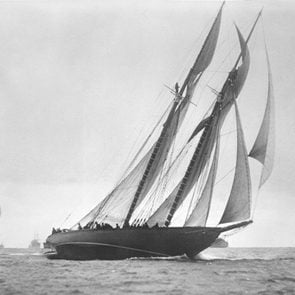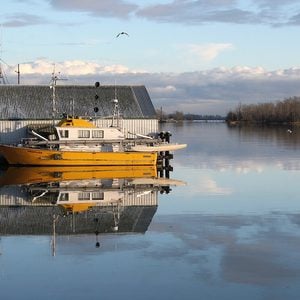In the Winter of ’81, Something Strange Washed Up on the Bay of Fundy’s Shores
How one town rallied around an amazing, unexpected visitor.
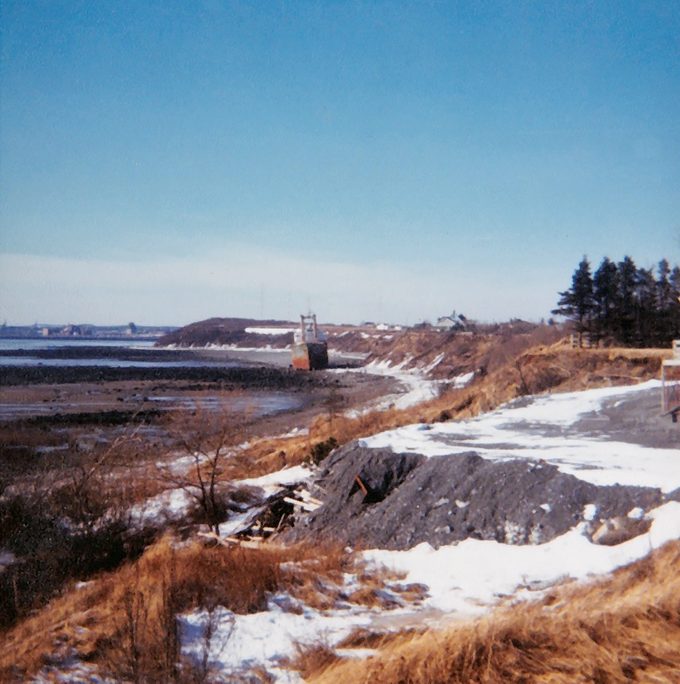
I met Opal in the winter of 1981. She had arrived on a fierce February night. An unexpected guest on an unwanted vacation. Opal had been floundering in the Bay of Fundy. Mechanical failures. Her engine had quit. High winds and rough waters battered her. Blackness of the night surrounded her. Tug rescue was dangerous. Choppy seas made connection with Opal almost impossible. Almost. After several desperate attempts a line was finally secured. The tug had saved her from an unknown fate. Opal was coaxed towards Saint John harbour for repairs. But the Fundy waves would not let her be. They relentlessly pounded her side. With the harbour’s lights in sight the tow line snapped under the tension. Frantic efforts were made to secure yet another line. They failed. Strong winds and choppy seas reclaimed control. The powerful waves forced her towards the rural Red Head shore. Towards our cove. What a surprise to see a 6,000-ton cargo tanker, near the size of a football field, had been abandoned on the beach overnight—a spectacular castoff from the unsparing sea.
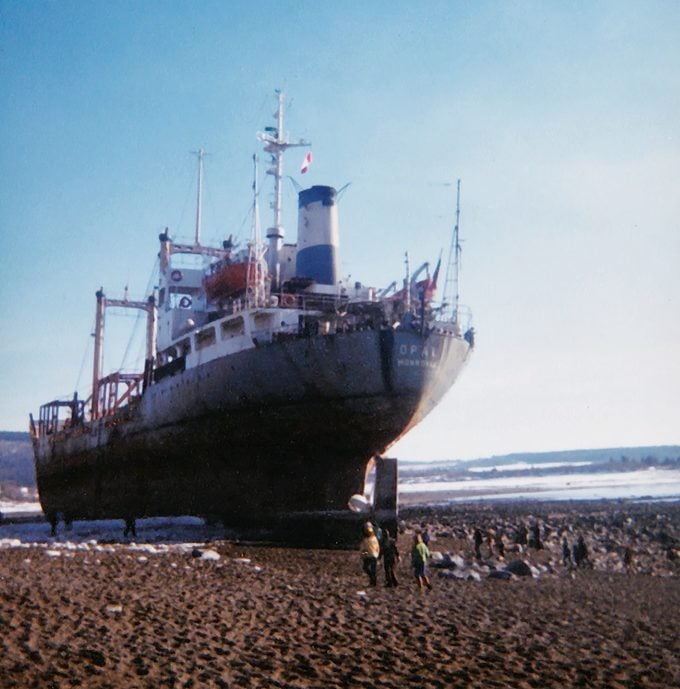
Uncertain Future
Braving the salty winter air, visitors flocked to see Opal. Dwarfed by her sheer size, they resembled the foraging seagulls as they milled about the seaweed-shrouded rocks at low tide. Over time, interest began to ebb until it was just the locals that gathered around her, an impromptu meeting place. Discussions about what would be required to set her free became the favourite topic. But releasing Opal back into the wild was not an easy task. She was brought in on a stormy high tide. Opal learned the hard way that our Bay of Fundy boasts the highest tides in the world. She was now at the mercy of the sun and the moon which controlled them. Opal needed the highest of high tides to launch. There was no difficulty in calculating when those would occur, but there’s a mere six hours between the high and low tides. It would be a race against the clock. The weather and the fog were additional wildcards. Opal’s mechanical failures prohibited her from launching off the beach on her own, even in the best conditions. She would have to be engineered off. Diesel oil was pumped from her fuel tanks to help lighten her weight. But there was another concern to address before she could shove off—had her hull been damaged by her grounding? If it was intact she would be ready to go. If it was irreparable, her life would end on this beach, dismantled for scrap. It was an unthinkable end for our new friend. Could she be moved? Opal waited day after day, for weeks, then months for that answer. Red Head waited too, worrying, commiserating and speculating over the future of our stranded traveller.
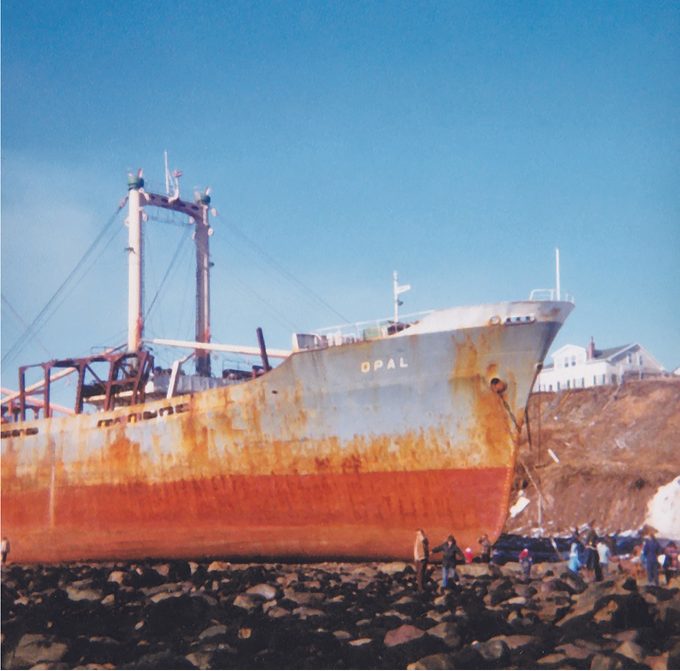
Spring Launch
But on a clear day in early May, bulldozers were on the beach digging channels in the sand at Opal’s sides while the tide was still low. Was today the day? Three tug boats stoically waited like sentinels in the open waters. Tow cables were attached and we watched with both anticipation and trepidation as the ocean made its scheduled appearance. The tides were extremely high and the weather was good. Timing was everything. The water surrounded Opal and pushed past her over the rocks to crash on the sandy shore. As the water level rose she did too. The tug boats seized their opportunity. Opal shifted, then moved. Freed at last from her long confinement. We cheered. We high-fived. We were happy for her. But in a small way we were sad to see her go. She belonged to us, our community, our family. We watched as she made her way out to the open water, off to the shipyard and then to faraway lands.
Opal‘s Final Days
After Opal’s engine repairs she had a few more good years of travel. I learned that in 1988 she was arrested in Karachi for reasons I could not determine. Opal experienced another blow in ’89 from a devastating fire. She was later abandoned. Sadly, in 1993 she went to her watery grave at her anchorage. Opal is gone but I will always remember our amazing, unexpected guest.
Next, take a look back at Canada’s most famous shipwrecks.
